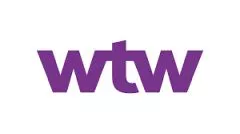About this survey
The survey was completed by 1,894 organizations that together employ 30+ million employees. More than 90% of these respondents were for-profit organizations, with the remaining respondents representing a combination of not-for profit or government/state-owned enterprises. The typical responding organization had a 2023 annual revenue of more than $1 billion.
The global economy and intense labor market pressures of the past four years have meant organizations have not had the time or bandwidth to proactively review or adjust their pay programs to ensure they are as effective as they can be in design, management and governance.
Now that the demand for talent has stabilized, many organizations have reported feeling the need or desire to fundamentally improve their pay programs.
Our Pay Effectiveness and Design Survey provides insights into what is driving change, how organizations can benefit from effective pay programs, ensure competitive compensation and align pay structures with business strategies.
Pay effectiveness defined
Survey respondents highlighted six core objectives for their pay programs:
- Driving employee attraction
- Driving employee retention
- Promoting fair compensation among employees
- Promoting competitive compensation compared to employees at other organizations
- Aligning with business strategy
- Rewarding employees for current-year performance
Why now is the right time to focus on improving pay program effectiveness
The past few years have seemed like a revolving door of employees coming and going from organizations. With those days seemingly behind us, now is the time to focus on pay effectiveness to protect your organization from future labor market vulnerabilities.
Pay is driven primarily by the supply and demand of labor. While demand has decreased, the supply of labor hasn't changed. There are still significant worker shortages. The window of opportunity to review and improve pay programs now means organizations will be less vulnerable to these labor market demands and will better manage their workforce risks no matter what the next set of challenges bring.
Labor market and economic trendsThe role that compensation plays in attracting and retaining employees is a key reason that organizations need to focus on their improvement. While there are many reasons individuals decide to join or leave an organization, compensation often is the primary reason. Employees in WTW's 2024 Global Benefits Attitudes Survey reported definitively that compensation is the most common driver of both attraction and retention.
Pay is a critical component of the overall employee experiencePay is a critical part of an organization's HR strategyPay is not just important to employees. Organizations rely on compensation programs to support many objectives. It is critical to enabling organizations to achieve their HR and business strategies.
Explore the global summary report
The Pay Effectiveness and Design Survey Global Summary Report identifies both drivers (e.g., HR skills, executive support) and barriers (e.g., budget constraints, inadequate technology) to effective pay programs. It also notes that organizations with updated compensation philosophies tend to outperform those that don't in both financial results and employee retention.
The survey suggests several improvements for pay programs, including updating compensation philosophies, focusing on base-pay structures, investing in skilled HR teams and enhancing communication of pay strategies.
For access to the global report, click here
The content of this article is intended to provide a general guide to the subject matter. Specialist advice should be sought about your specific circumstances.


